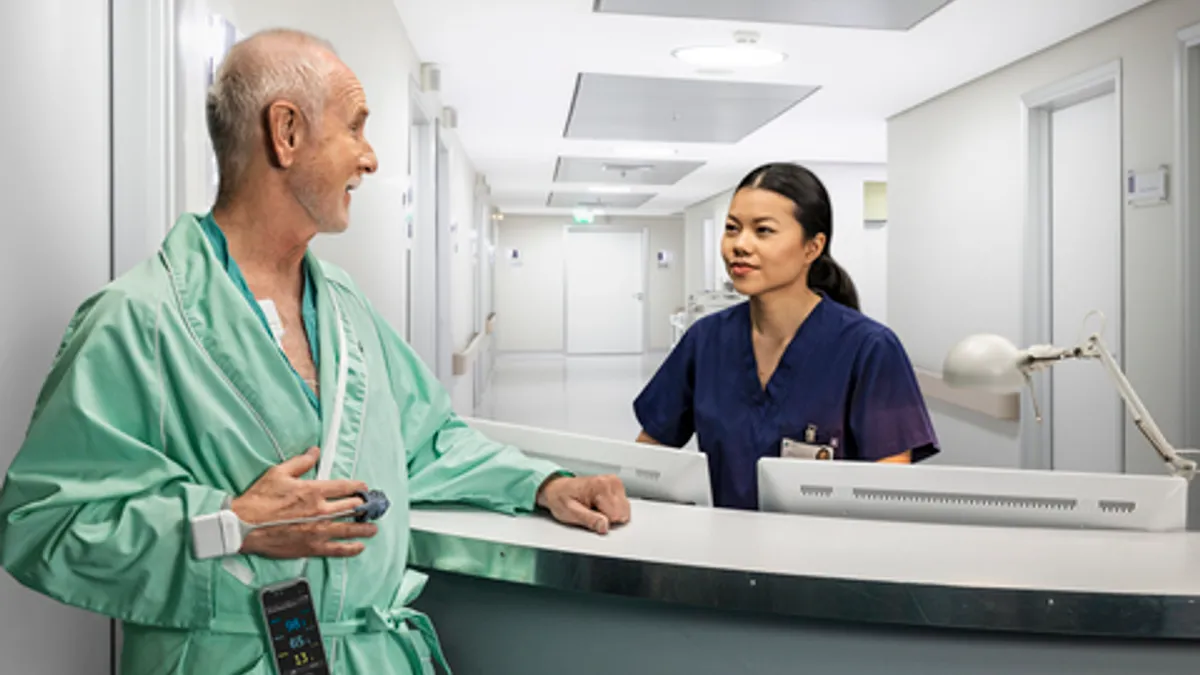Dive Brief:
- GE HealthCare has received 510(k) clearance for a device that enables hospitals to continuously monitor vital signs while allowing patients to move about the ward.
- The device, Portrait Mobile, combines wireless patient-worn sensors with a smartphone-style monitor. GE HealthCare is pitching the product as a first-of-its-kind device that untethers patients from their beds without reducing oversight.
- News of the 510(k) nod comes four months after the U.S. Food and Drug Administration cleared GE HealthCare’s Carescape Canvas patient monitoring platform. GE HealthCare has called the two products its “first major introductions in monitoring in recent years.”
Dive Insight:
Hospital monitoring of vital signs traditionally has involved a tradeoff. Healthcare professionals either hook patients up to bedside monitoring devices, which provide continuous oversight but force people to stay in their beds, or manually take vital signs every four to six hours. Most people have their vital signs read manually and periodically, an approach that could allow a patient’s condition to deteriorate undetected for hours.
Portrait Mobile is designed to eliminate the tradeoff. Patients can move freely while wearing the device, potentially benefiting their mental health and recovery, but hospitals still get a round-the-clock view of their vital signs. The sensors monitor respiration rate, blood oxygen and pulse rate, and the system can be set to alert the ward when certain thresholds are reached. Hospitals can set limits and delays on alarms.
Talking to investors on a second quarter results conference call last month, GE HealthCare CEO Peter Arduini outlined how his team is “investing in monitoring solutions for critical care and acute patients” and listed Portrait Mobile alongside Carescape Canvas as a major new product.
“Portrait Mobile enables care teams to monitor the unmonitored by shifting the paradigm from periodic spot checks to continuous monitoring, freeing the patient from the bed while continuously monitoring for signs of patient decline. These are our first major introductions in monitoring in recent years and create an opportunity for installed base upgrades as well as new growth,” Arduini said.










